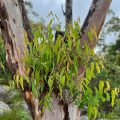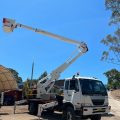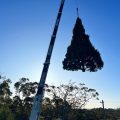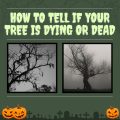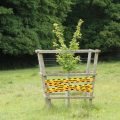Alongside aesthetic purposes, pruning trees is necessary to maintain and encourage tree health and growth. However, strong knowledge of how to physically prune trees is just as important as the timing of when you decide to prune your backyard trees. In this article, we explore the best times to prune your trees, depending on why you are pruning them to begin with.
Stimulate New Growth
If you are pruning your tree to stimulate new growth, pruning in late winter and early spring is ideal, as it will encourage significant growth in spring.
When pruning to stimulate new growth, keep the following tips in mind:
Don’t prune in the cold: pruning on a dry, mild day is better, so that your incisions don’t dry out.
Your first aim should be dead and diseased branches, after which you should target unwanted lower branches.
From there, remove smaller and overgrown branches. This will increase light and maintain the structure of the tree.
Reduce Growth and Improve Shape
Trees can easily overgrow. If this is the case, and if you also want to improve the shape of your tree, prune during the summer months. Autumn growth is significantly less than spring growth and pruning after new growth will limit the growth which your tree will experience. However, when you prune, ensure you only target diseased, damaged or dead branches. If you over prune, your tree could be more exposed to sunburn damage.
Maintaining and Improving Tree Health
When it comes to tree health, there are a number of things to keep in mind. If left untreated, damaged trees are susceptible to infection and death. If your tree is damaged, whether that be by drought, soil deficiencies, collisions or storms, contact an expert to prune it as soon as possible.
If your tree is healthy and you wish to maintain its health, prune in winter, which will promote its health and encourage healthy future growth. Winter provides easier access to branch structure, alongside less sap bleeding, which is due to the temperature and weather. That being said, ensure you do not prune if temperatures are set to be very cold – trees can also freeze and become damaged.
Dormant pruning – pruning in a dormant season – also helps reduce the likelihood of your trees becoming diseased.
Any Questions?
When it comes to tree pruning, it is best to consult an expert. Every tree is different and may differ in terms of ideal pruning type and style. If you have any questions about this article or when and how to prune your tree, contact Dixons Trees. Our friendly and knowledgeable team would be happy to assist.
Dixons Trees offers the safest and simplest tree removals in the Blue Mountains and surrounds. As one of the area’s largest tree removal companies our comprehensive range equipment ensures we can remove any tree. Our professional service begins with a written quotation and finishes with your site left in excellent condition.


